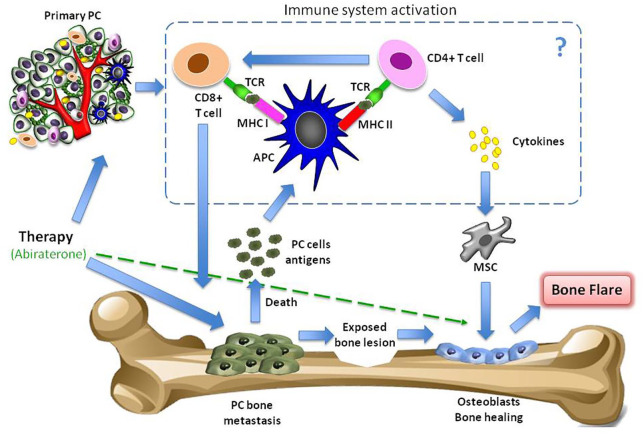Figure 1.
Pathogenetic mechanisms of flare phenomenon. A therapy for metastatic disease may lead to the healing processes of new bone formation and cause an initial increase in tracer uptake (akin to callus formation). This ‘deterioration’ followed by subsequent ‘improvement’ in the bone scan appearances after successful therapy is defined as flare response. In addition, abiraterone could have a direct anti-resorptive and anabolic activity in the bone microenvironment. Finally, the destruction of tumor cells could elicit a tumor-specific immune response, specifically T-cell reaction, which could, in turn, favor tumor cell lysis. In addition, the tumor microenvironment may be involved in the flare reaction as it may contribute to recruit and activate immune cells with the release of pro-inflammatory cytokines, initiating a reciprocal interaction with prostate tumor cells and, perhaps, facilitating an action of mesenchymal stem cells in bone healing.
APC, antigen presenting cell; MHC, major histocompatibility complex; MSC, mesenchymal stem cell; PC, prostate cancer; TCR, T-cell receptor.

